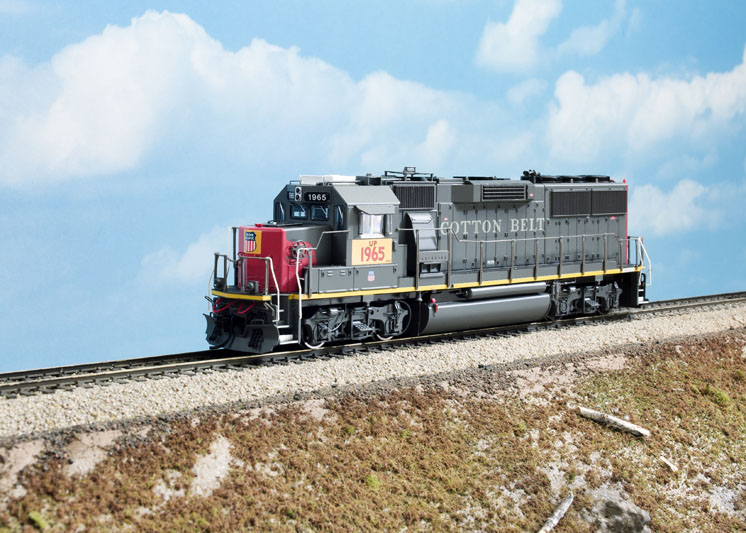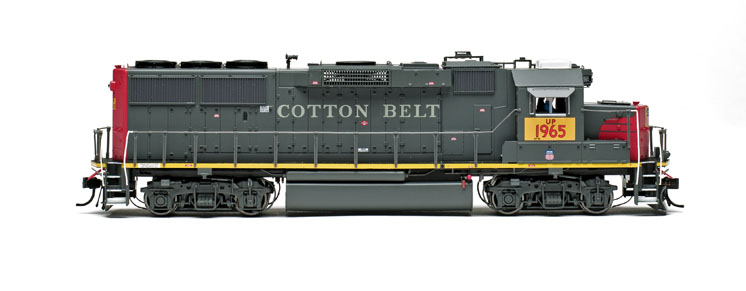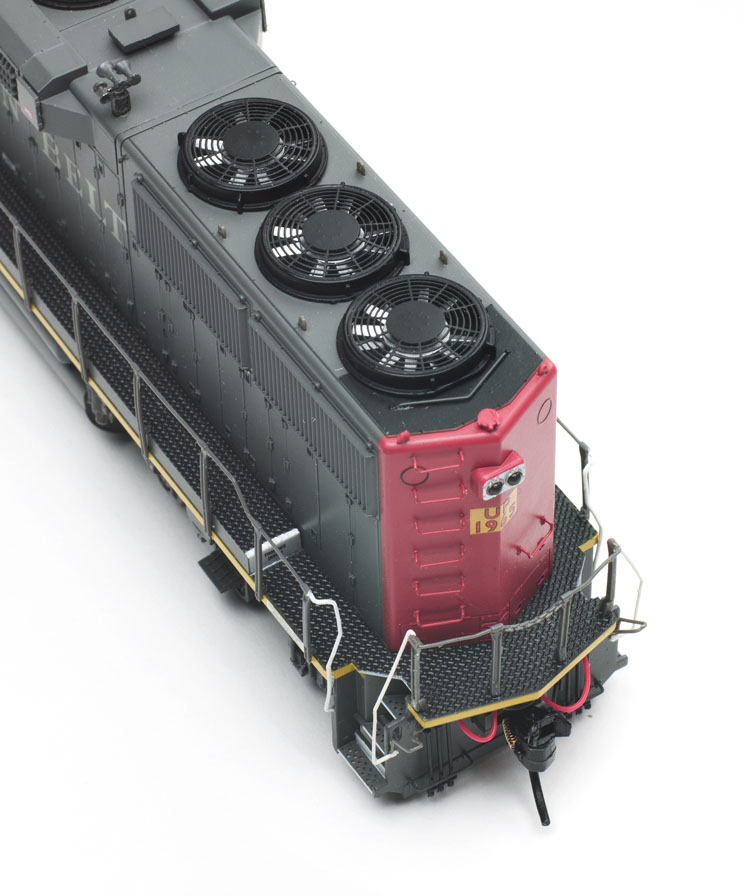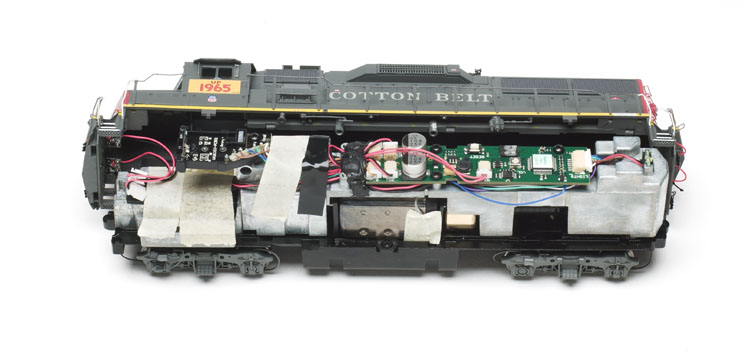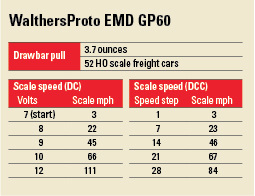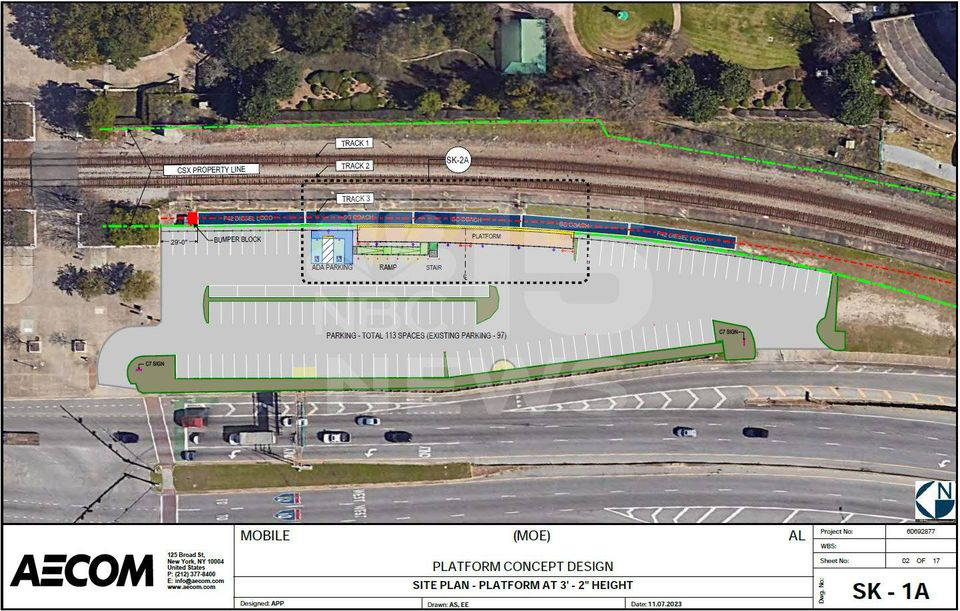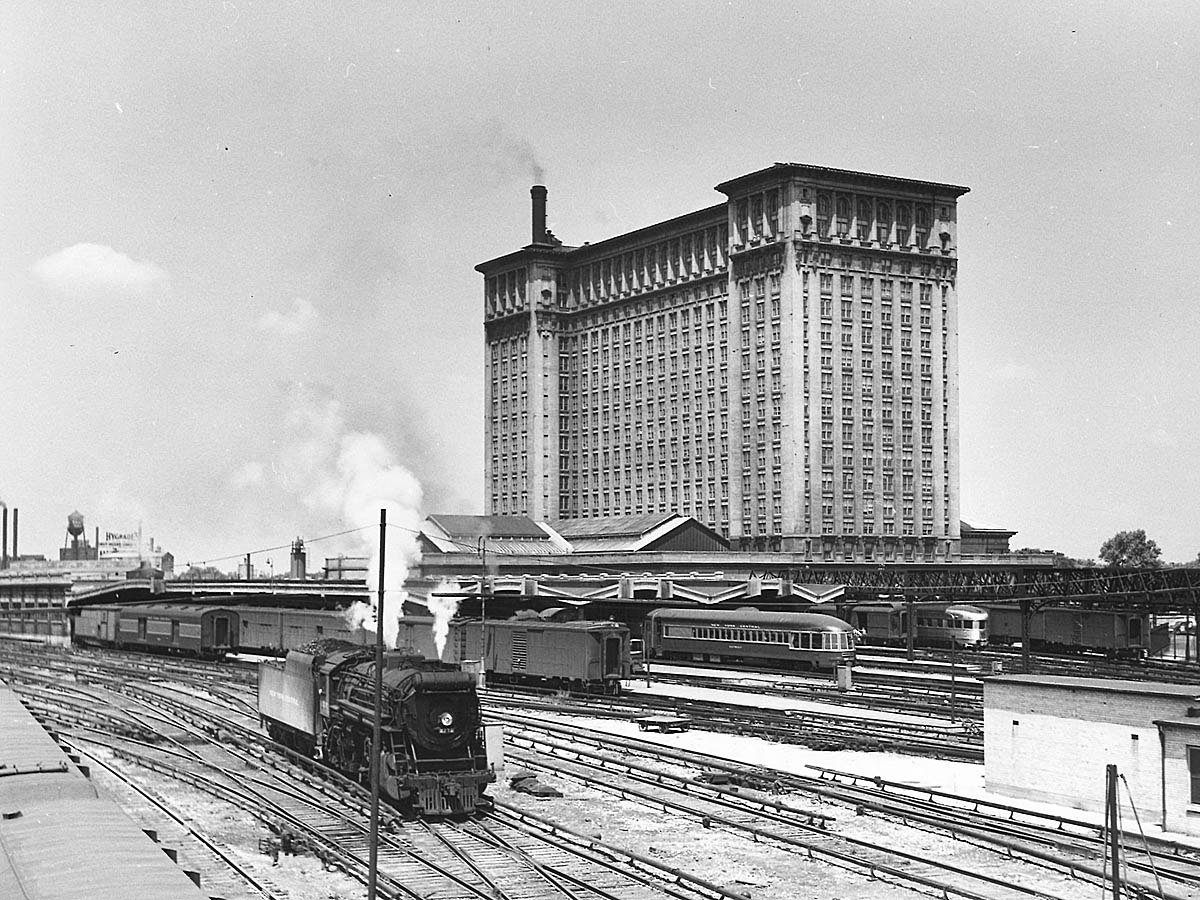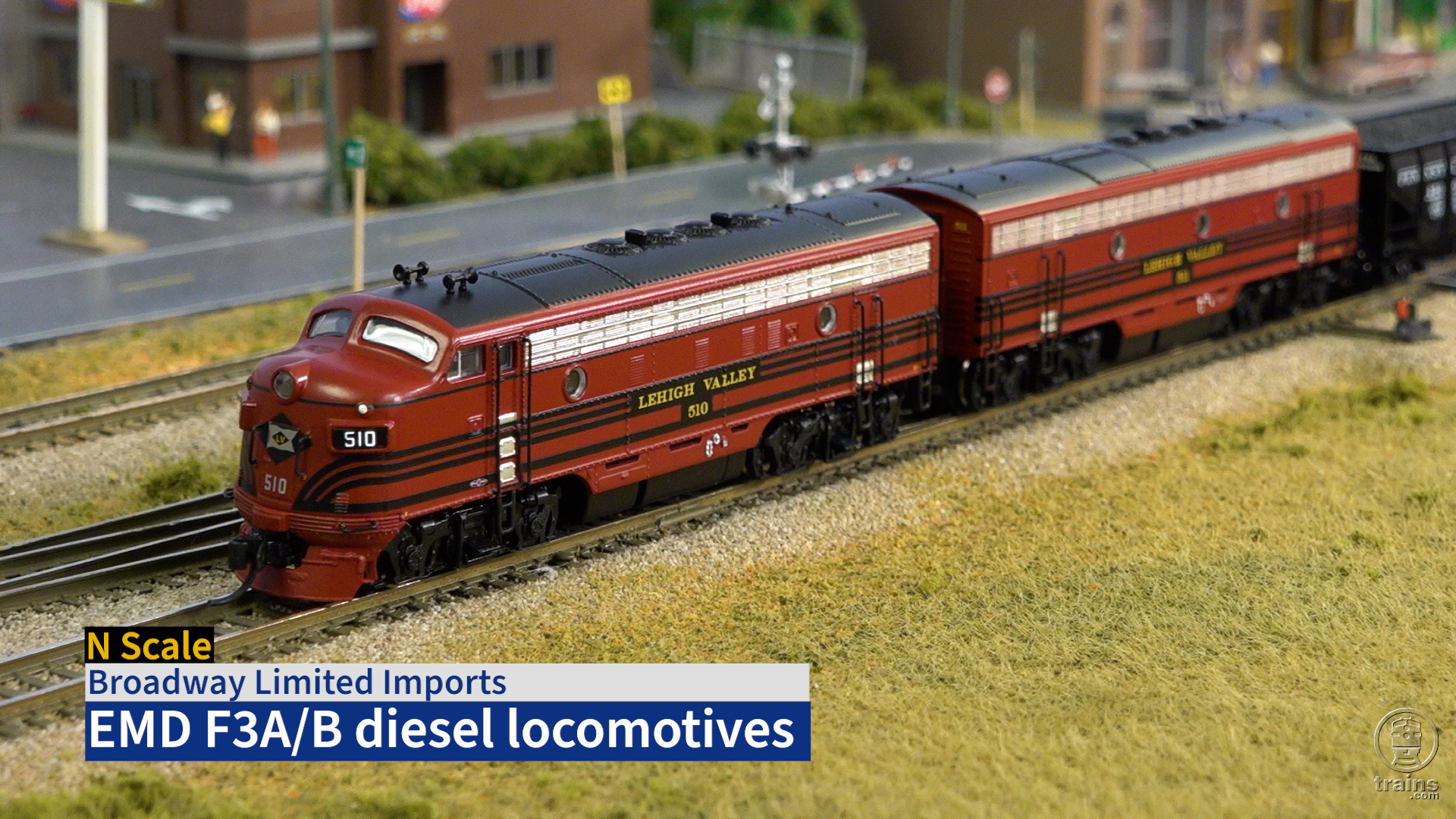The most recent release of the WalthersProto GP60 has the look of an old friend, while still being thoroughly modern. Dressed in limited-run paint schemes, these HO scale models depict the end of the GP series from General Motors’ Electro-Motive Division. Yet they were also the first of the third-generation diesel-electric locomotives from the now-independent builder.
The prototype. The 60-series line debuted in 1984 with EMD demonstrators 1 through 4, which were C-C SD60s. The B-B GP60s followed in 1985, demonstrators numbered 5, 6, and 7.
These locomotives were the first to carry EMD’s 710 series engine, displacing 710 cubic inches per cylinder. Like the 567 and 645 series before it, the 710s were two-cycle diesels, available initially in V12 and V16 configurations. The 60 series locomotives carried 16-710G prime movers generating 3,800 horsepower at 900 rpm.
But the big leap was in the electronic controls of the locomotive’s systems. Three microprocessor control systems replaced the hundreds of relays and miles of wire in second generation diesels, offering much more in the way of control and diagnostics.
While the SD60s sold well, 1,147 spread over five variations, the GP60 showed four-axle freight locomotives were out of favor. Only four Class 1 railroads – Atchison,Topeka & Santa Fe; Denver & Rio Grande Western; Norfolk Southern; and Southern Pacific – bought the engines. Of the 380 units built between 1985 and 1994, most went to Southern Pacific (195, including 95 to subsidiary St. Louis Southwestern) and Santa Fe, which rostered 126 including the only wide-cab (63) and cabless (23) units.
The model. Walthers’ GP60 matches prototype dimensions I found in General Motors Advanced Generation Diesel-Electric and Electric Locomotives by James W. Kerr (Delta Publications Associates Division of DPA-LTA Enterprises Inc., 1987) and details seen in photographs online.
These photos show the paint scheme on our sample, a Union Pacific patchout of a former St. Louis Southwestern (Cotton Belt) unit, matches photos taken after 2008. Earlier patch photos don’t have the yellow sill stripe found on our sample. Union Pacific acquired Southern Pacific and its Cotton Belt subsidiary in 1996.
The paint is evenly applied and opaque, with sharp separations between colors. The Cotton Belt lettering on the sides of the long hoods is light gray, giving a worn appearance, which is a nice touch. All of the stencils are legible under magnification, and the Union Pacific heralds are clear and in register. The model is missing the remains of the SSW lettering visible in photos peeking out behind the UP patch, and the plow on the model is shorter than that seen in prototype photos of the locomotive.
But those are small quibbles on a model packed with accurate detail parts. Walthers duplicated the two platforms for radio antennas, the five-chime Nathan K3 air horn mounted on a pedestal, the cab-mounted headlight, and the brake wheel on the short hood, all specific to the Cotton Belt prototype. There are numerous separately applied parts in addition to those mentioned, including roof-top fans with visible blades and see-through dynamic brake grills.
The steps at the unit’s ends are perforated, as is the walkway over the base of the blower housing. Handrails at the ends and sides of the locomotive are flexible plastic molded in gray to match the paint on our sample, with the end rails painted white as per the prototype.
Removing the shell takes a few steps. First, remove the coupler boxes. Then, remove the two screws holding thefuel tank to the bottom of the frame. Watch out for the drain line. Remove the four screws under the fuel tank and the two screws behind the front pilot on either side of the frame.
Leave the two screws at the center of each end of the frame alone. They hold the weight to the frame. Once all of the screws have been removed, the frame, weight, and electronics will slide out of the shell. Last are the two plugs that power the ditch lights.
Although the body shell looks similar to the Life-Like Proto2000 release from the early 2000s, the frame and drivetrain are upgraded from the old model.
Under the well-detailed plastic hood is a five-pole skew-wound can motor with a brass flywheel. The motor is mounted to the center of a die-cast metal frame and drives both truck-mounted gearboxes through plastic driveshafts with universal joints. All eight wheels are powered and pick up current.
The drivetrain is enclosed by a die-cast metal weight that has mounting spots for a speaker and SoundTraxx Tsunami Digital Command Control (DCC) sound decoder in the DCC-equipped models. Direct-current models have a printed-circuit (PC) board mounted in place of the decoder.
On the test track. As is typical of most sound-equipped locomotives operating on DC, the HO GP60 required about half throttle, 7V in this case from the Model Rectifier Corp. Tech4 power pack, before it would move at a steady 2.6 scale mph. The sounds cut in and out until I advanced the throttle to 9V (45 scale mph). At 12V, the GP60 reached 111 scale mph, about 25 mph faster than the prototype with the highest available gearing.
With a Digital Command Control system or an analog sound controller such as the MRC Tech 6, it’s possible to tune the decoder to better operate on DC. I programmed configuration variable (CV) 63, which is the analog starting voltage, to a value of 40. This allowed the engine startup sounds to come on at 6.75V.
At 7V the horn sounded two times before the locomotive started to move forward. Under 20 scale mph, the bell rings. Before running in reverse, the correct three horn blast signal sounds. When the locomotive stops, a single blast sounds. Engine rpm ramped up or down as the locomotive sped up or slowed down.
The light-emitting diode (LED) headlights are directional in DC. Unfortunately, the sound momentarily cuts out whenever the direction switch is flipped.
In DCC, the decoder-equipped Walthers GP60 performed smoothly out of the box. With power to the track, the sound came on with an engine startup sequence. In addition to controlling the various sounds, function buttons let me turn the ditch lights on and off, as well as the number boards. The ditch lights don’t flash when the horn is sounded, which is typical of Union Pacific practice.
On the test track, I changed the locomotive’s long address to match the unit number on the side of the cab. Then I added some momentum in CVs 3 and 4. By using function 9 to set the train brake, I could increase the throttle without the locomotive moving. This would realistically notch the engine sound up, then I could release the brake, starting the train. This feature was factory-programmed on the decoder.
The model had no trouble negotiating the yards and crossings on the Model Railroader staff’s club layout, the Milwaukee, Racine & Troy, and with its 3.7 ounces of drawbar pull, it easily hauled a 10-car train up a 3 percent grade.
Walthers has taken a fine-looking locomotive and improved it with a smoother drivetrain and full-featured sound and lighting effects. If you’re looking for the latest in four-axle EMD motive power, this could be the model for you.
Price: $299.98 (DCC sound), $199.98 (DC, no sound)
Manufacturer
Wm. K. Walthers Inc.
5601 W. Florist Ave.
Milwaukee, WI 53218
www.walthers.com
Era: 1985 to present
Road names: Union Pacific (St. Louis Southwestern patchout); Atchison, Topeka & Santa Fe; Norfolk Southern; Southern Pacific
Features
▪▪14:1 helical gears
▪▪All-wheel drive and electrical pickup
▪▪Five-pole skew-wound high-torque can motor
▪▪Light-emitting diode constant and directional headlights
▪▪Metal grab irons and lift rings
▪▪Proto-Max metal knuckle couplers mounted at correct height
▪▪Road-specific details
▪▪RP-25 contour wheels, in gauge
▪▪Working front ditch lights as appropriate
▪▪Weight: 1 pound, 0.2 ounces





